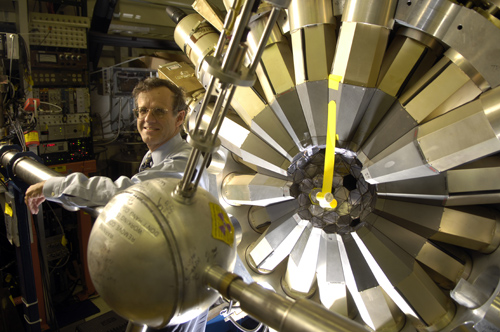|
||
      |
Features ::
Argonne Almanac
October 1 marked the start of Chicago’s five-year, $2.5 billion contract to manage Argonne National Laboratory for the U.S. Department of Energy. What does the forecast hold?
Since its inception in 1946 Argonne National Laboratory, the first of a series of federal laboratories set up to maintain World War II’s scientific momentum, has been managed by Chicago. But in 2003 the Department of Energy announced open competitions to choose managers of its national labs, and the University launched a multimillion-dollar effort to win the bid—and maintain its role in helping to design, construct, and operate Argonne’s national user facilities, where on-site researchers collaborate with scientists and engineers from universities, research laboratories, and corporations from all over the world.
The contract, announced in late July, went to a new, University-run, corporate team, UChicago Argonne LLC, which promised improvements in safety, project management, information technology, and staff retention. Key to winning the contract, which may be extended for up to 20 years if Chicago performs well, was an emphasis on partnerships, including stronger links with the University of Illinois and Northwestern University as well as with Jacobs Engineering, an international provider of technical, professional, and construction services, and BWX Technologies, a national firm that specializes in managing laboratory operations and facilities.

Leading the team is Argonne Laboratory Director Robert Rosner, the William E. Wrather distinguished service professor in astronomy & astrophysics and the College. A Brandeis- and Harvard-trained physicist who has spent much of his career studying astrophysical fluid dynamics and plasma physics problems, he was named lab director in April 2005, after serving as Argonne’s chief scientist since 2001. The Magazine asked Rosner (above, with the Gammasphere, a gamma-ray spectrometer) to talk about what’s ahead for Argonne.—M.R.Y.
Intro | Interview | Research We Use | Facility Services | Argonne Numbers | Argonne Chronology